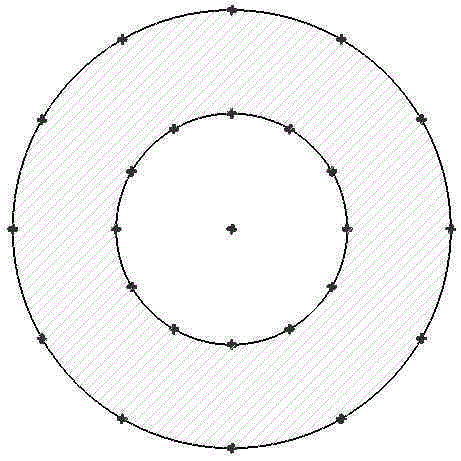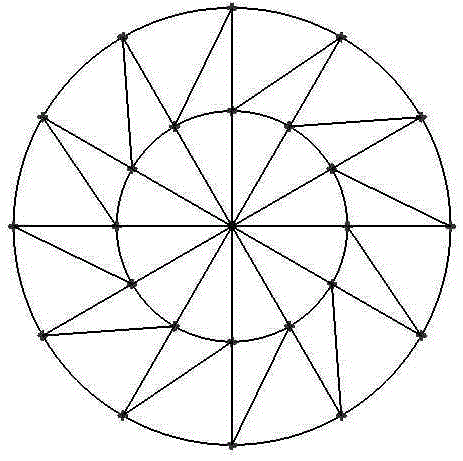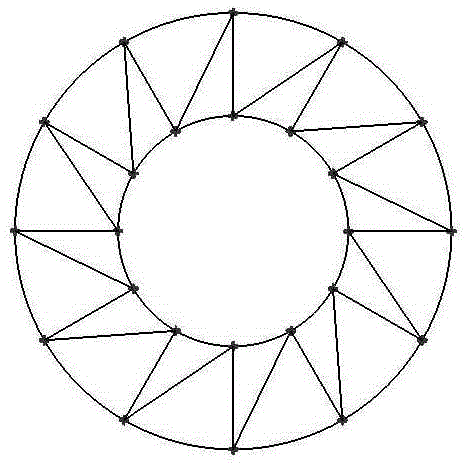A Triangulation Algorithm for Unclosed Graphs
A triangulation and non-closed technology, which is applied in computing, instrumentation, electrical digital data processing, etc., can solve problems that affect graphics drawing and display, reduce program execution efficiency, and poor algorithm time complexity, etc., to achieve good display effect, Improve the execution efficiency and draw the effect of high precision
- Summary
- Abstract
- Description
- Claims
- Application Information
AI Technical Summary
Problems solved by technology
Method used
Image
Examples
Embodiment 1
[0023] figure 1 Introducing a virtual point set for the cavity interior, figure 2 For the triangulation produced by Algorithm 1, image 3 For the triangulation after the cavity is emptied, as shown in the figure: a kind of triangulation algorithm of non-closed figure provided by the present invention, comprises the following steps:
[0024] S1: At least one virtual point is introduced in the cavity domain of the non-closed figure; multiple virtual points can be set, two, three, four, etc., and the usage method provided by the present invention is adopted for multiple virtual points.
[0025] S2: Treat virtual points as ordinary scattered points to participate in triangulation; in order to ensure that the addition of virtual points only affects the triangulation inside the cavity domain during triangulation, the boundary between virtual points and the cavity should be kept preset distance. The distance between the virtual point and the boundary of the cavity can be determin...
Embodiment 2
[0028] The following details the specific process of realizing the triangulation of non-closed graphics:
[0029] In the present invention, three simple steps are used to realize the triangulation of the non-closed graphics in the image and output the processed image. Firstly, several virtual points are appropriately introduced into the cavity domain of the graph, and then the virtual points are regarded as ordinary scattered points to participate in Delaunay triangulation. After the division of all regions is completed, all triangles with the virtual points as vertices are finally deleted to complete Triangulation of open graphs.
[0030] Before introducing the algorithm, the definition of the corresponding point set is proposed first:
[0031] Definition 1: Suppose there are M discrete points on the plane domain, then define the plane point set P={} as the set of these M scattered points.
[0032] Definition 2: Assuming that N virtual scattered points are introduced in the...
PUM
 Login to View More
Login to View More Abstract
Description
Claims
Application Information
 Login to View More
Login to View More - R&D
- Intellectual Property
- Life Sciences
- Materials
- Tech Scout
- Unparalleled Data Quality
- Higher Quality Content
- 60% Fewer Hallucinations
Browse by: Latest US Patents, China's latest patents, Technical Efficacy Thesaurus, Application Domain, Technology Topic, Popular Technical Reports.
© 2025 PatSnap. All rights reserved.Legal|Privacy policy|Modern Slavery Act Transparency Statement|Sitemap|About US| Contact US: help@patsnap.com



